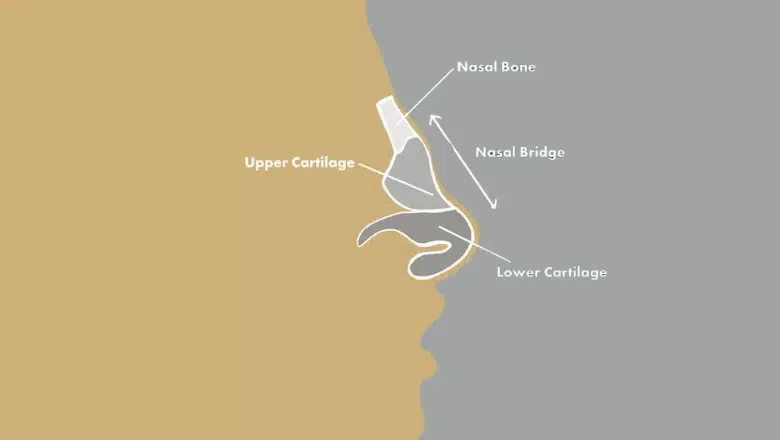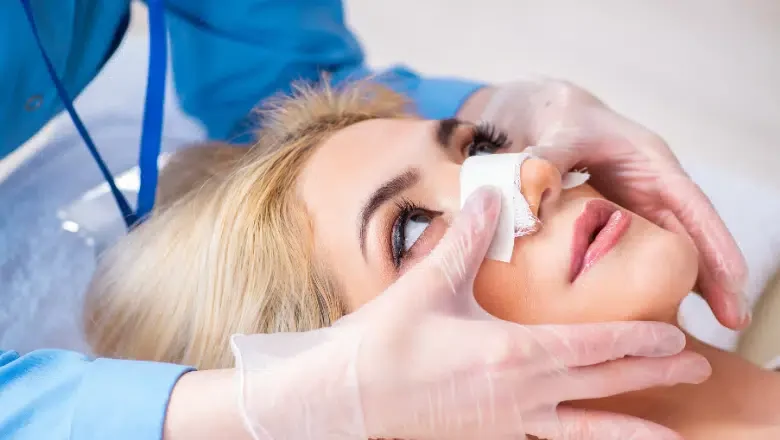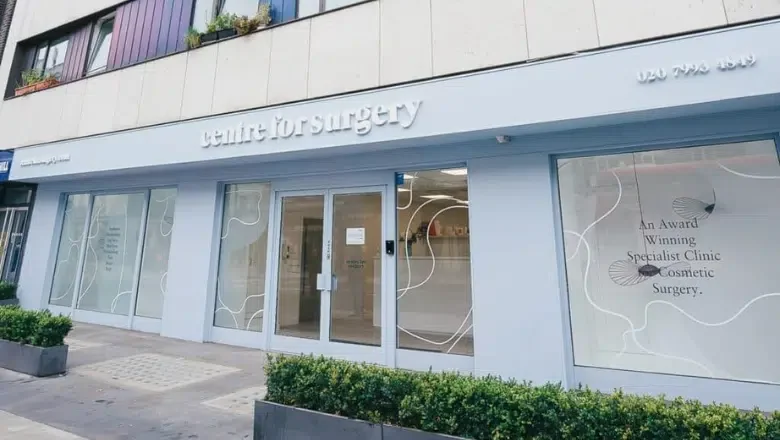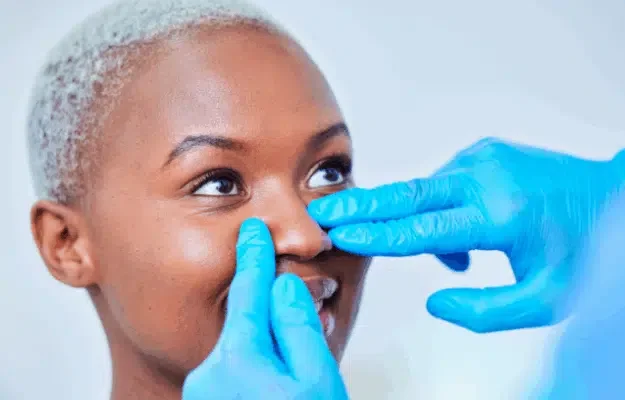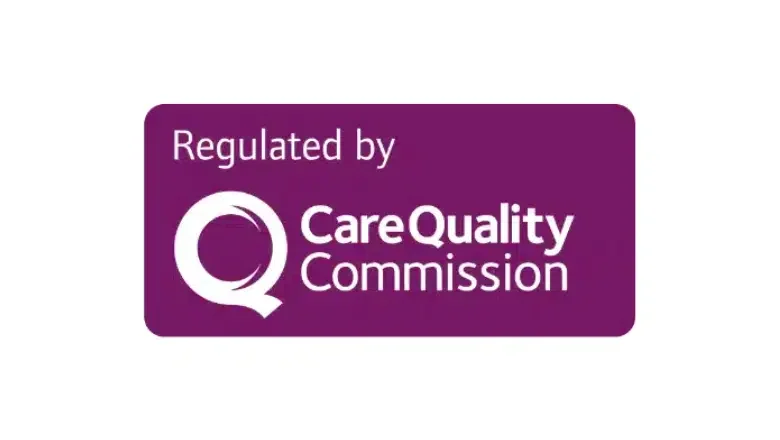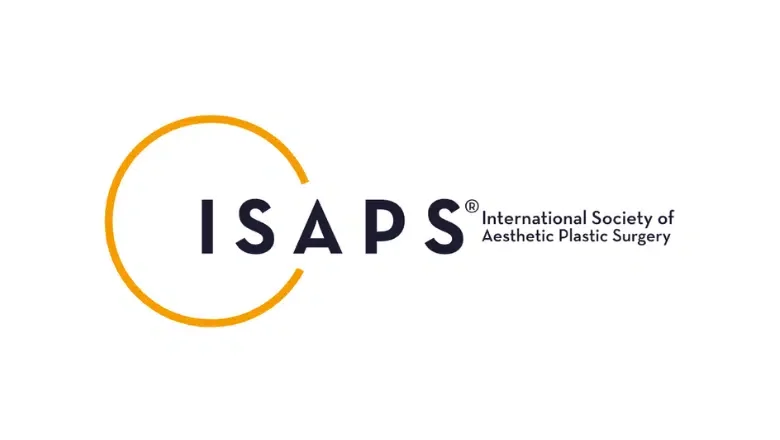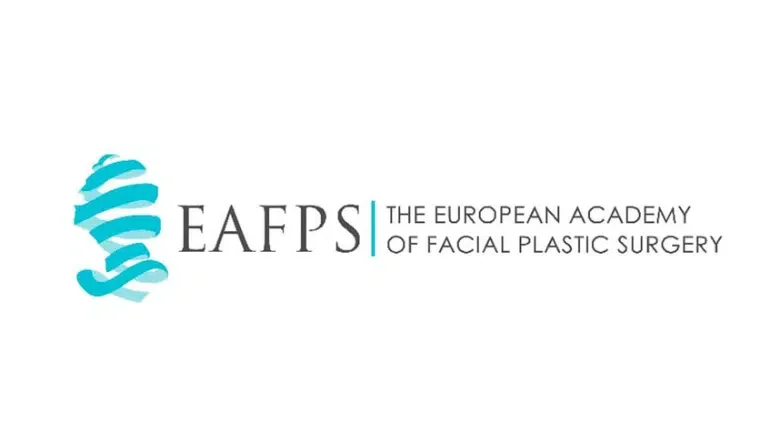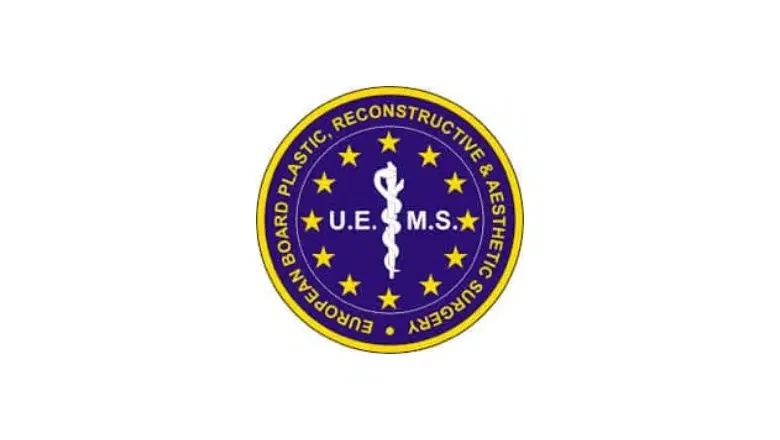Saddle nose deformity is a condition where the bridge of the nose appears sunken or concave, taking on a shape similar to that of a saddle. This noticeable dip in the nasal structure can have a profound effect, not only on the overall appearance of the face but also on the proper functioning of the nose. Breathing difficulties can arise when the nasal passages are affected by the altered shape, and many individuals may feel self-conscious about their facial profile. A highly specialised rhinoplasty procedure is often necessary to address both the aesthetic and functional challenges posed by this deformity.
RELATED: Cosmetic vs Functional Rhinoplasty
At Centre for Surgery in London, our Specialist Plastic Surgeons are highly experienced in treating saddle nose deformity, offering tailored solutions that help restore both the structure and function of the nose.
What is a Saddle Nose?
Saddle nose deformity is a condition where the bridge of the nose exhibits a noticeable concave or sunken appearance, much like the shape of a saddle. This characteristic dip occurs when there’s a loss of structural support within the nasal framework, leading to the collapse of the nasal bridge. Various factors can contribute to this collapse, including damage to the nasal cartilage, weakened or collapsed nostrils, or a combination of both issues. When these supporting structures are compromised, a visible depression forms along the nasal dorsum—the length of the nose’s bridge. The severity of saddle nose deformity can vary greatly among individuals. In some cases, it may present as a subtle indentation that’s barely perceptible, while in others, it can be a pronounced deformity that significantly alters one’s facial appearance.
RELATED: Different Types of Nose Shapes – What are the Surgical Options?
The Crucial Role of Nasal Structure in Appearance and Breathing
The anatomy of the nose is vital not only for aesthetic appeal but also for essential respiratory functions. Serving as the central feature of the face, the nose contributes significantly to facial harmony and balance. It’s also the primary pathway for air entering the respiratory system during breathing. The nasal septum, cartilage, and surrounding soft tissues work together to maintain the nose’s shape and provide necessary support. Disruption or damage to these components can compromise the nose’s integrity, leading to functional impairments such as breathing difficulties, reduced airflow, and nasal obstruction. Moreover, alterations to the nasal bridge can disturb facial symmetry, affecting overall appearance. Therefore, preserving the nasal structure is crucial not just for maintaining facial aesthetics but also for ensuring proper nasal function and respiratory health.
What Causes Saddle Nose?
Post-Surgical Complications After Rhinoplasty
Saddle nose deformity can also occur as a complication following rhinoplasty, which is a surgical procedure intended to reshape the nose for cosmetic or functional reasons. The nasal bridge may become unstable if excessive amounts of cartilage or bone are removed during the surgery without ensuring adequate structural support. Over time, this lack of support can lead to a gradual collapse of the nasal bridge, resulting in the saddle-shaped deformity. Patients may notice changes in the appearance of their nose and experience functional issues such as breathing difficulties. Correcting this post-surgical complication typically requires a secondary operation, known as revision rhinoplasty. This procedure involves rebuilding the nasal structure using cartilage grafts or synthetic implants to restore both the aesthetic form and the functional integrity of the nose.
RELATED: What Is Considered a Bad Nose Job?
Trauma-Induced Saddle Nose Deformity
One of the most common causes of saddle nose deformity is physical trauma to the nasal region. Such injuries can occur from accidents, falls, or any blunt force impact that results in nasal fractures or damage to the cartilage and septum. When the nasal cartilage or septum is compromised, the structural support of the nose weakens, leading to a collapse of the nasal bridge. In some cases, a septal haematoma—a collection of blood within the nasal septum—may develop after an injury. If this condition is left untreated or if the initial nasal trauma is not properly managed, the damage can worsen over time. This progression can ultimately result in the characteristic saddle-shaped indentation along the bridge of the nose, altering both appearance and function.
Congenital Factors Leading to Saddle Nose
Although less common, saddle nose deformity can be present from birth due to congenital conditions. Some infants are born with genetic syndromes or developmental anomalies that result in underdeveloped or weakened nasal cartilage. In these cases, the structural deficiencies are apparent early on, giving the nose a flattened or depressed appearance along the bridge. These congenital issues can affect the normal growth and development of the nasal structures, potentially leading to functional problems as the child grows. Surgical intervention is often required to correct the deformity, aiming to reconstruct the nasal framework to support proper nasal function and improve facial aesthetics.
Inflammation-Related Cartilage Degradation
Inflammatory diseases also play a significant role in the development of saddle nose deformity. Conditions such as granulomatosis with polyangiitis, formerly known as Wegener’s granulomatosis, and systemic lupus erythematosus can lead to the degradation of nasal cartilage. These autoimmune disorders cause the body’s immune system to attack its own tissues, including the cartilage in the nose. Chronic inflammation associated with these diseases results in tissue breakdown and erosion of the nasal structures. As the cartilage deteriorates, the nose loses its structural integrity, causing it to collapse inward. This collapse not only affects the aesthetic appearance of the nose but can also impair normal nasal function, leading to breathing difficulties and nasal obstruction.
Recognising the Symptoms and Signs of Saddle Nose Deformity
Structural Changes to the Nasal Bridge
A prominent sign of saddle nose deformity is the sinking or depression of the nasal bridge. This change often appears as a noticeable dip or concavity along the bridge of the nose, resembling the shape of a saddle. In more severe cases, the collapse can extend to the nostrils, causing them to cave in and further intensifying breathing difficulties. This structural alteration not only affects the nose’s appearance but can also lead to functional problems.
Impaired Breathing and Nasal Function
The collapse of the nasal bridge doesn’t just alter one’s appearance; it can significantly impede nasal airflow and breathing efficiency. When the bridge collapses, it can obstruct the nasal passages, making it challenging to breathe through the nose. Individuals might experience chronic nasal congestion, a constant feeling of obstruction, or difficulty breathing, especially during physical activities or while lying down. These breathing issues can lead to discomfort and may compel individuals to breathe through their mouths, which can cause dry mouth and disturbed sleep.
Impact on Facial Appearance and Emotional Well-being
Beyond functional impairments, saddle nose deformity can cause noticeable changes to facial aesthetics, disrupting the symmetry and balance of facial features. Many people find themselves dissatisfied with their nasal appearance due to these changes. This dissatisfaction can have a profound effect on emotional well-being, leading to decreased self-esteem and confidence. The combination of breathing difficulties and altered appearance can significantly affect an individual’s quality of life, influencing their overall happiness and satisfaction.
Can Rhinoplasty Fix a Saddle Nose?
Rhinoplasty or nasal reshaping surgery offers an effective solution to this problem by precisely modifying the nasal structure. This specialised surgical procedure aims to rebuild and enhance the nose’s form, providing both cosmetic and functional improvements.
At our cutting-edge hospital on Baker Street, we offer advanced functional rhinoplasty procedures specifically designed to correct saddle nose deformities. Every operation is conducted under general anaesthesia to ensure the utmost comfort and safety for our patients. A qualified consultant anaesthetist is always on hand to oversee the anaesthesia process. Our facility is equipped with the latest medical technology, allowing our experienced surgeons to perform even the most complex procedures with precision.
The length of the surgery can vary depending on the individual case’s complexity, typically lasting between three to four hours. Despite the intricate nature of the operation, most patients are able to go home on the same day. This means you can begin your recovery in the comfort of your own home without the need for an overnight hospital stay. Our medical team will provide you with detailed post-operative care instructions to ensure a smooth and speedy recovery.
The primary aim of the surgery is to rebuild the nasal bridge to restore both function and appearance. Our surgeons prefer to use cartilage grafts harvested from the patient’s own body, known as autologous cartilage. In some cases, cadaveric costal cartilage may be utilised. By using natural graft materials, we minimise the risk of complications and promote better integration with your existing nasal structures. This approach helps achieve more natural-looking results and improves long-term outcomes.
RELATED: What is Augmentation Rhinoplasty?
Approaches to Correcting Saddle Nose Deformity Based on Severity
Mild Saddle Nose Deformity
In cases where the saddle nose deformity is minor, often only subtle adjustments to the nasal bridge are necessary to achieve the desired outcome. The surgical procedure may involve reshaping and strengthening the upper lateral nasal cartilages to improve the contour of the nasal dorsum. This can usually be accomplished without the need for extensive cartilage grafting. Surgeons might also apply an onlay fascial graft—a thin layer of tissue placed over the nasal structures—to smooth out any irregularities and enhance the overall nasal profile. This less invasive approach minimises recovery time while still providing significant improvements in both function and appearance.
Moderate Saddle Nose Deformity
More comprehensive surgical interventions are typically required to restore the nasal bridge’s structure and function when the deformity is of moderate severity. This often involves harvesting cartilage from the patient’s own body—such as from the ear, rib, or nasal septum—to use as grafts. These cartilage grafts are carefully shaped and sutured into place to rebuild the nasal septum and dorsum. Techniques may include the use of spreader grafts to widen the nasal airway, septal extension grafts to support the nasal tip, and batten grafts to reinforce weakened areas. To ensure a smooth and natural appearance, an onlay fascial graft is generally applied along the nasal dorsum to conceal any signs of the underlying grafts. This method not only improves the nasal aesthetics but also enhances breathing function.
Severe Saddle Nose Deformity
In severe cases where there is significant collapse of the nasal structure, a more extensive and intricate reconstruction is necessary. The surgical approach involves using substantial cartilage grafts to rebuild and support the nasal septum and bridge. Surgeons may utilise onlay diced cartilage wrapped in fascia to restore the nasal bridge’s shape, providing both strength and a natural contour. Rib cartilage is often the material of choice in these situations due to its robustness and ability to provide structural integrity. The rib grafts offer the durability needed to maintain the reconstructed shape over time. This comprehensive reconstruction aims to fully restore the nose’s appearance and function, addressing both the aesthetic concerns and any associated breathing difficulties.
Cartilage Grafting vs Synthetic Implants – Which is Better?
Our surgeons prefer using natural cartilage over synthetic implant materials in nasal surgeries. Synthetic implants can carry inherent risks such as infection, rejection, or long-term complications. By opting for autologous or cadaveric cartilage, we significantly reduce these risks. Our surgeons believe that natural grafts offer a safer and more effective solution for correcting saddle nose deformities, providing you with peace of mind and confidence in your surgical results.
Every case of saddle nose deformity is unique, and our surgeons tailor their techniques accordingly. The chosen method depends on the severity of the deformity and the availability of suitable cartilage grafts. We conduct a thorough assessment to develop a personalised surgical plan that addresses your specific concerns and goals. Our commitment is to restore proper nasal function while enhancing the aesthetic harmony of your facial features, ultimately improving your quality of life.
Recovery After Rhinoplasty for Saddle Nose Deformity – What to Expect During Healing and Beyond
Recovering from rhinoplasty designed to correct a saddle nose deformity is a gradual journey that requires patience and careful adherence to your surgeon’s post-operative instructions. In the immediate aftermath of the surgery, it is common to experience swelling, bruising, and nasal congestion. These symptoms are a natural part of the healing process and will progressively diminish over several weeks to months.
During the first few weeks, you may notice that your nose feels tender and appears swollen. Bruising around the eyes and cheeks can also occur but typically fades within two weeks. Nasal congestion might make breathing through your nose more challenging at first, but this should improve as the swelling subsides. It’s important to keep your head elevated and avoid strenuous activities during this initial recovery phase to promote proper healing.
As time progresses, you will begin to see a gradual improvement in the appearance and function of your nose. The refined shape of the nasal bridge and enhanced structural support become more apparent as the swelling reduces. Breathing difficulties should lessen, allowing for improved airflow and comfort during daily activities and sleep. Attending all scheduled follow-up appointments with your surgeon is essential so they can monitor your healing and address any concerns is essential.
The final results of your rhinoplasty may take up to a year to fully manifest. This extended timeline is due to the nose’s complex anatomy and the delicate nature of the surgical adjustments made during the procedure. Subtle changes in nasal shape and function can continue to evolve over several months as the tissues settle and adapt. However, many patients begin to enjoy noticeable improvements well before the one-year mark.
Throughout your recovery, maintaining open communication with our clinical support team is recommended. They can provide guidance on how to manage discomfort, reduce swelling, and care for your surgical site. Adhering to their advice helps ensure a smoother recovery and optimises the long-term success of the surgery.
FAQS
Is Saddle Nose Deformity Serious?
Saddle nose deformity isn’t typically life-threatening, but its significance can vary depending on the cause. If it’s due to inflammation, the condition may progressively worsen over time. Common causes include nasal trauma, previous rhinoplasty, or inflammatory conditions. If the deformity is minor and doesn’t cause you any discomfort or concern, it may remain stable, and treatment isn’t necessarily required.
However, if the underlying cause is inflammation of the nasal septum or nose—perhaps due to certain medications or systemic illnesses—the deformity could become more pronounced if the condition isn’t addressed. In such cases, it’s important to identify and treat the root cause before considering surgical correction. This might involve adjusting your medication or managing the illness effectively, as surgery alone won’t provide a permanent solution if the underlying issue persists.
Can Rhinoplasty for Saddle Nose Deformity Be Combined with a Facelift?
Yes, it’s possible to combine rhinoplasty for correcting a saddle nose deformity with a facelift. Doing so can be advantageous by reducing the overall recovery time and potentially enhancing the results of facial rejuvenation. However, it’s essential to have a thorough consultation with a qualified facial plastic surgeon. They will assess factors such as your overall health, surgical risks, and personal goals to determine if combining these procedures is suitable for you. A personalised treatment plan will ensure the best approach is taken to achieve optimal results while prioritising your safety and satisfaction.
Will Rhinoplasty Improve My Breathing If I Have a Saddle Nose Deformity?
In most cases, rhinoplasty aimed at correcting a saddle nose deformity will improve your breathing, especially when performed by an experienced specialist. Reconstructing the nasal bridge not only restores the aesthetic appearance but also supports the internal nasal valves—the areas where the upper lateral cartilages meet the septum. By lifting and reinforcing the nasal dorsum, the surgery helps to open up the airways, which should lead to better airflow and easier breathing.
Can a Saddle Nose Deformity Heal on Its Own?
Generally, a saddle nose deformity does not heal without medical intervention. Once there’s a collapse or depression of the nasal bridge, structural abnormalities are present that typically require surgical correction to restore both function and appearance. Without appropriate treatment, the deformity may persist or even worsen, potentially causing issues like chronic nasal obstruction or facial asymmetry. Consulting a specialist rhinoplasty surgeon is important to determine the most effective treatment options tailored to your condition’s severity and your individual needs.
Why Choose Centre for Surgery for Saddle Nose Rhinoplasty?
At Centre for Surgery, we are renowned for providing expert care and outstanding results in saddle nose rhinoplasty. Our state-of-the-art Baker Street clinic offers cutting-edge facilities, ensuring you receive the highest level of surgical expertise and patient care. We understand that saddle nose deformity not only affects appearance but also impacts your breathing and overall quality of life. Our team of highly skilled surgeons, led by specialists in nasal reconstruction, work with precision to restore both form and function to your nose, delivering natural-looking, long-lasting results.
We take pride in offering personalised care tailored to each patient’s needs. From your initial consultation through to post-operative care, our dedicated team will guide you through every step of the process, ensuring a smooth and comfortable experience. Our surgeons use advanced techniques and natural cartilage grafting methods to avoid complications associated with synthetic implants, ensuring the best possible outcomes for you.
Patient Testimonials
“I had struggled with breathing issues for years due to a saddle nose deformity. After my rhinoplasty at Centre for Surgery, not only is my nose beautifully reshaped, but I can finally breathe comfortably again. The care and attention I received were second to none!” – Sarah W.
“From the moment I walked into the Baker Street clinic, I felt I was in safe hands. The consultation was thorough, and I felt listened to. The surgery has made such a difference to both my appearance and confidence. I can’t recommend Centre for Surgery enough!” – James T.
“I was nervous about undergoing surgery, but the team at Centre for Surgery made the whole experience reassuring and seamless. The results are fantastic, and the recovery was smoother than I expected. I’m thrilled with my new nose!” – Emily R.
Book Your Consultation Today
If you’re considering saddle nose rhinoplasty, Centre for Surgery is here to help. Our expert surgeons will assess your condition and develop a bespoke treatment plan that addresses your specific goals and concerns. To book a consultation, please contact us at:
📞 Phone: 0207 993 4849
📧 Email: contact@centreforsurgery.com
📍 Address: 95-97 Baker Street, London W1U 6RN
Learn More About Us
For more information about why Centre for Surgery is the right choice for your rhinoplasty, visit our About Us page. You can also meet our highly experienced team of surgeons, all of whom are leaders in the field of plastic surgery.
Finance Options and Further Resources
We offer flexible finance options including 0% APR with Chrysalis Finance, so you can manage the cost of your surgery with ease. If you’d like to learn more about plastic surgery and our rhinoplasty procedures, explore our plastic surgery blog, where you’ll find a wealth of useful information. For answers to common questions, check out our clinic FAQs.
Trust Centre for Surgery to provide you with exceptional care, expert surgery, and results that can truly transform your life.

